For us and many of our avid readers, quality is a priority when it comes to clothing and accessories. While quality often comes with a price, we always look beyond the cost and analyze the materials, construction, and craftsmanship. Today, we cut apart a $285 bi-fold wallet from Fort Belvedere to show what it’s made of, how we designed it, and what sets it apart!
- Video Transcript [Lightly Edited for Clarity]:
- Folded Edges of the Fort Belvedere Bi-Wallet
- Designing The Fort Belvedere Wallet
- Deerskin Leather Shell
- The Divider (More Thin-yet-Durable Leather)
- The Card Compartments
- The Deerskin Wallet’s Final Layers
- A Quick Look at a Calfskin Fort Belvedere Wallet
- Where are Fort Belvedere Wallets Made?
*Note: Be sure to watch today’s video to understand all the nuances of the deconstruction process!
Video Transcript [Lightly Edited for Clarity]:
Sven Raphael Schneider: Welcome back to the Gentleman’s Gazette, and our series “Cutting It Apart” where we cut open products to see what materials were used, what are the things you can see from the outside, and to examine the level of craftsmanship. Ultimately, by doing so, we’ll help you to avoid wasting your money on a product that’s not worth it.
Now, it’s always easy to complain about other people’s products and saying they’re not quality. So, I decided to cut open a Fort Belvedere wallet, which I designed and I know what’s in it. And so, I can show you all the details and the thought that went into it when producing it.
The very first wallet, actually, that I got, I still have to this day. It’s from the very early days of Fort Belvedere. It’s made of deerskin leather and I’m still wearing it because I want to see how long it lasts before it wears out. Now, I’m not going to be cutting this one apart.
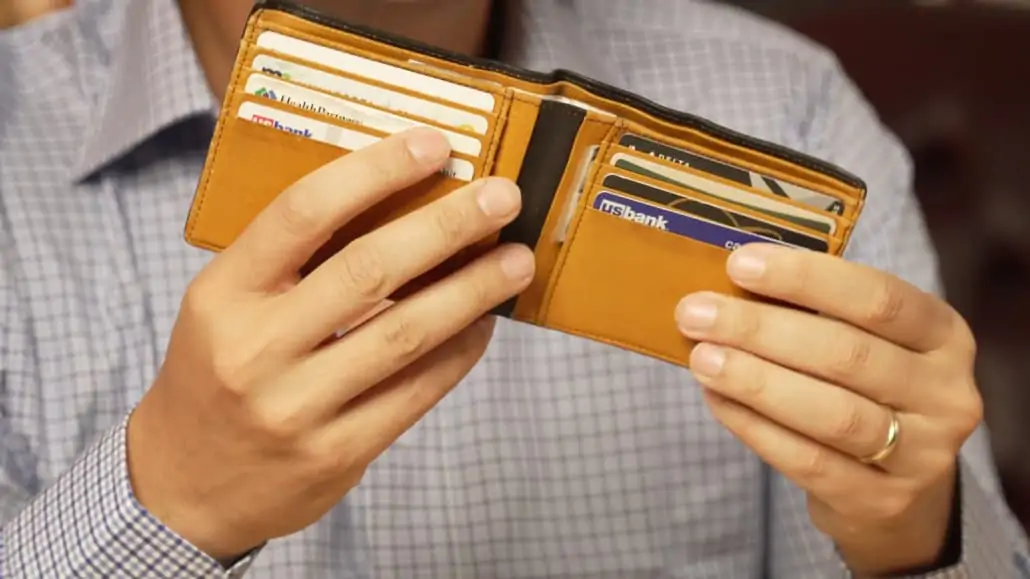
But, fortunately, we sometimes get returns, and people say, “Hey, your wallet is not good quality.” We take these back and offer replacements, but the returns are great candidates to be taken apart. So, I hope, after this video, we’re not going to get a whole bunch of people just complaining about regular wear and tear! We’ve got a few different ones to take apart today.
I’m going to be starting with our deerskin wallets, which are made from Scandinavian rawhides, and then, I’ll take another one apart, which is our calf leather wallets, which is a leather that comes from Italy. They’re also lined sometimes either with deerskin or lined like the black and red one with calf inside and out.
Folded Edges of the Fort Belvedere Bi-Wallet
Sven Raphael Schneider: First of all, what’s kind of special about these Fort Belvedere wallets is that they have folded edges in both ways. If you look at regular wallets, simply what happens, they fold an edge and sew it down and that’s it.
When making our wallets, I wanted to make something special and so I decided that we wanted this folded edge, which is something you rarely see in leather works these days anymore because you really have to thin out the edges so it doesn’t bulge up or bunch up, but is flat and even.
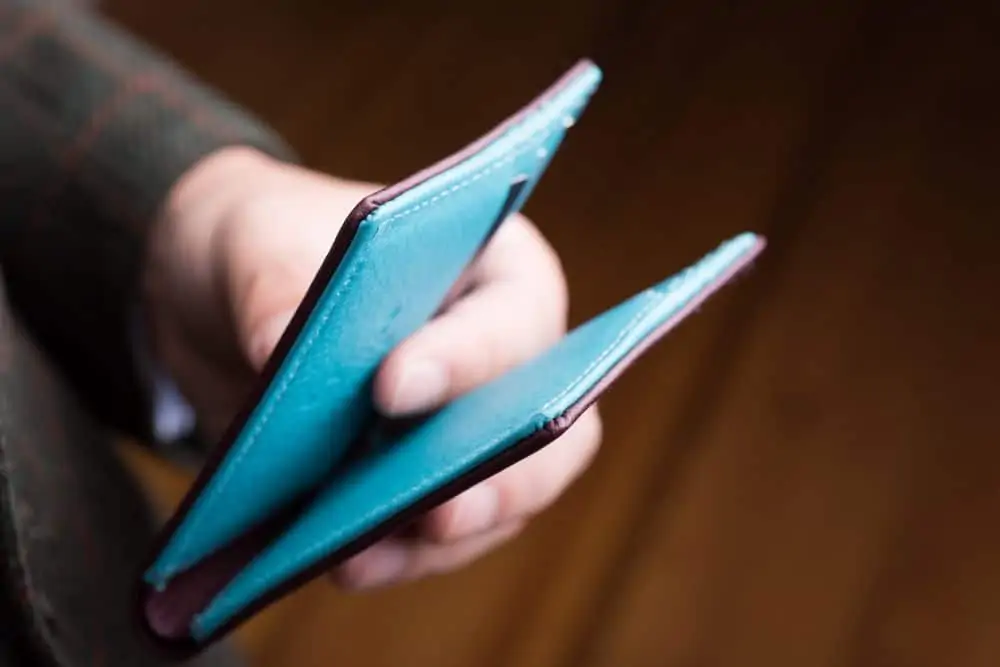
So, from the outset, to the untrained eye, it may not seem like anything special. But, once you actually get into it, it’s a lot more difficult. So, let’s dive right in here. Taking a sharp knife here, we’ll cut things apart! And I don’t have to be super careful because I know I will not be using this wallet anymore. It’s really just there to show you what’s inside.
Cutting through the seams, there’s a bit of glue residue that helps to make sure the leather doesn’t move once you actually sew it together. These stitches here are machine stitches, not hand stitches. It would take an awful lot of time to do it by hand. I mean, it could be done.
However, the wallet would be a lot more expensive that way, and also, you wouldn’t get this great regularity of the stitches. I know some people argue that you know everything handmade is inherently better. I don’t always agree. What I agree with is that handmade stuff, generally, takes a lot longer to make, simply because a lot more goes into it.
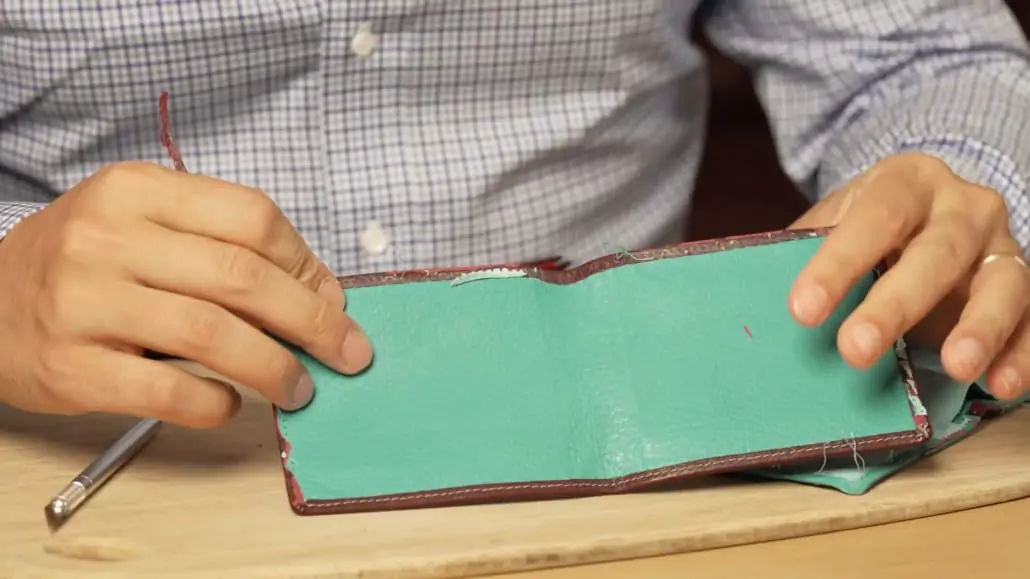
So, this is the backing now. As you can see, the edges of the outer leather were folded over and I’m cutting those apart here now. They were folded and then sewn. When you touch it, they don’t stand up much, which means they have to be thinned out carefully before being sewn and folded over. It’s kind of hard to tell.
The corners also have to be thinned out and folded nicely, because you have multiple layers of leather being on top of each other. And you can see it’s all glued down so it actually is pretty easy to put together and fold. As I’m cutting the edge here, I’m also taking part of the lining leather because that’s what was there.
Designing The Fort Belvedere Wallet
Sven Raphael Schneider: When designing the wallet, it was really important to me that everything in here was leather. Most wallets that you find these days skimp and, sometimes, you find cardboard on the inside or other cheaper materials like a leather fiber product that is, basically, just leather scraps pressed together.
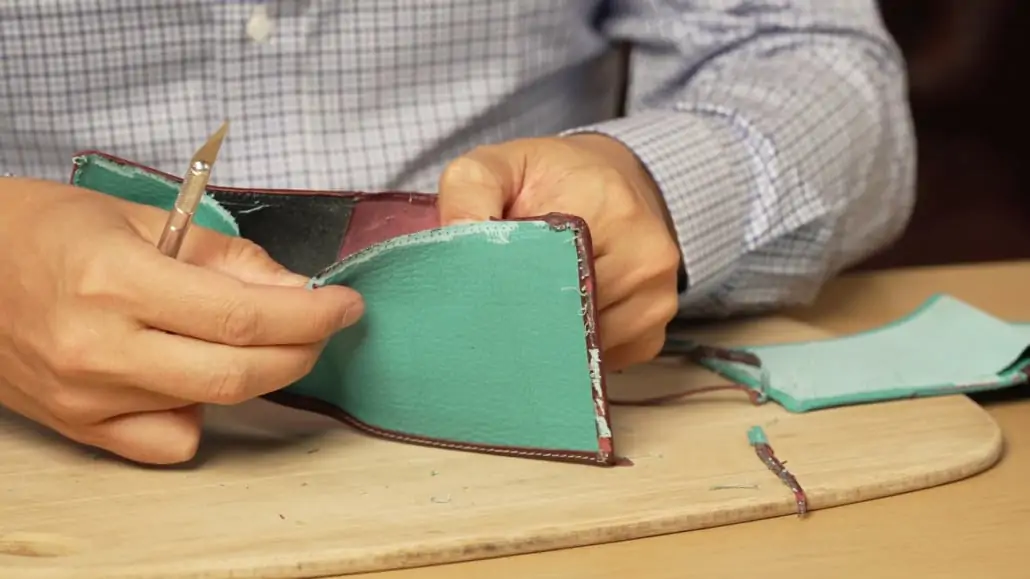
I wanted something that was completely leather because I like the feel and the quality. Also, I wanted an interlining that helped keep things in shape without being too hard over time, that you can bend, and that doesn’t leave creases. Now, it helps that we were working together with a family that has been making fine leather goods for over 200 years!
Deerskin Leather Shell
Sven Raphael Schneider: So, as you can see here, this, our shell, is just a piece of deerskin leather. The edges are finally skived and thinned out. When they’re folded on both sides, they don’t really stand up. So, before you cut this, all the edges have to be finely thinned out. Otherwise, it’s not going to work.
With the interlining, the corners are cut so there’s not any excess material. Then, they’re nicely folded together. This is basically the inside of the wallet. This was one part of the lining, which typically is made of a relatively inexpensive fabric that is thin, but we again used leather.

It’s thin, because with a wallet you don’t want something that’s so big in your pocket that, with the cards inside, it’s just uncomfortable to hold. When it comes to the card slots, we’ve again thinly skived the leather and folded things over carefully, to eliminate bulk.
I think wallets or anything in fine leather menswear or leather goods requires a lot more attention to detail. Oftentimes, you can find these relatively rugged wallets right now. They have open-cut edges, they’re made out of thick like saddle-style leather or something from Horween, and it’s a good product. It lasts for a while. But, it’s just not as refined.
The Divider (More Thin-yet-Durable Leather)
Sven Raphael Schneider: Looking at the divider, you could have maybe euros and dollars or different currencies or one for receipts one for money. And this divider is also leather and that’s very thin, just like the lining. So, it doesn’t add bulk. At the same time, it’s much more durable than any fabric.
And, again, the whole leather part is just a lot nicer. So, I’ll take this apart here. I’m also ripping the leather. And you can see these individual pieces that are all folded over and cut by hand for the individual card slots.
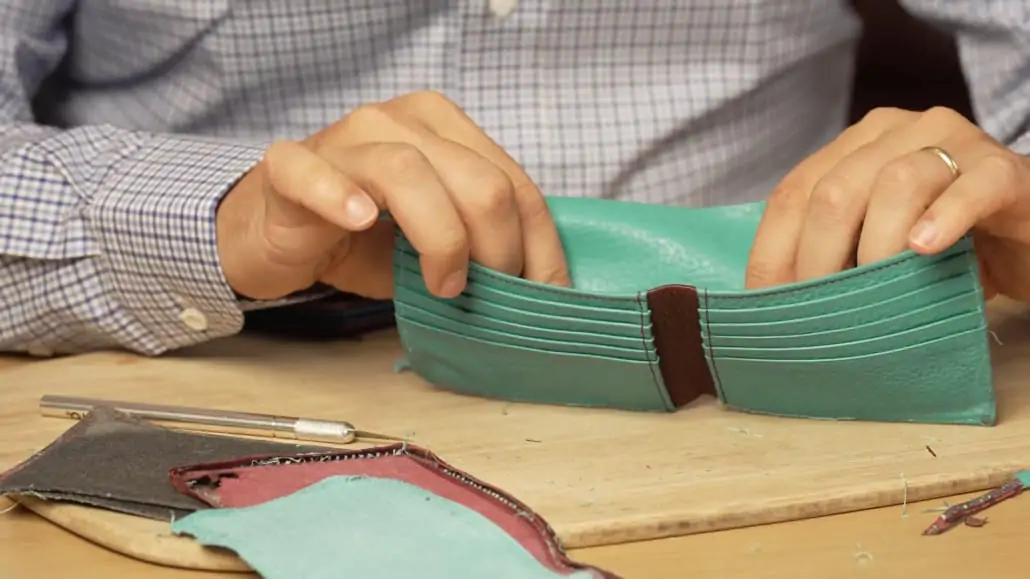
Again, there’s a central layer and lining. At the top here, it was again thinned out and then, folded over and glued so, at the top, you don’t have a rough edge. It doesn’t wear out as easily and also, it is just the same texture as the leather in the front. So, I just like that little detail. It’s not just a cut edge but a folded edge.
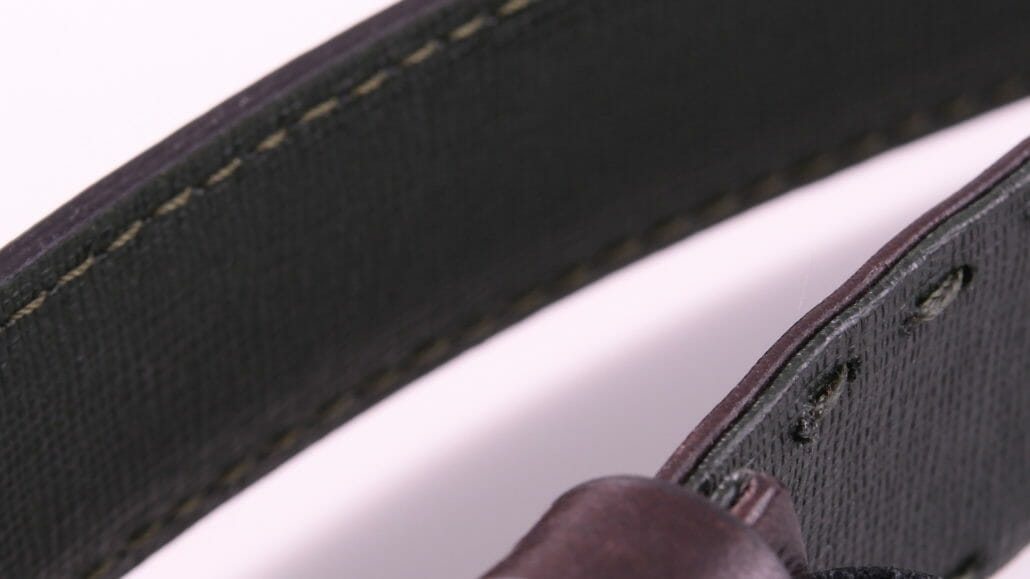
As you know, we do the same things with our belts. Just because it’s a higher level of workmanship and I like that in a product.
The Card Compartments
Sven Raphael Schneider: So, now, here, these are basically the card compartments. And you can see they’re attached at the top. So, I’m going to cut these threads here. We also added a strip of leather in the same color as the exterior, just down the middle of the interior. Why? Again, we don’t want to make it too thick.
Now, on the back here, you see there’s a very nice cotton fabric that’s extremely thin. It’s specifically made for wallets so the card slots don’t get too thick. If you have each individual layer in the back added with leather, which is something we tried initially, it just looks terrible and it gets really big and fat.
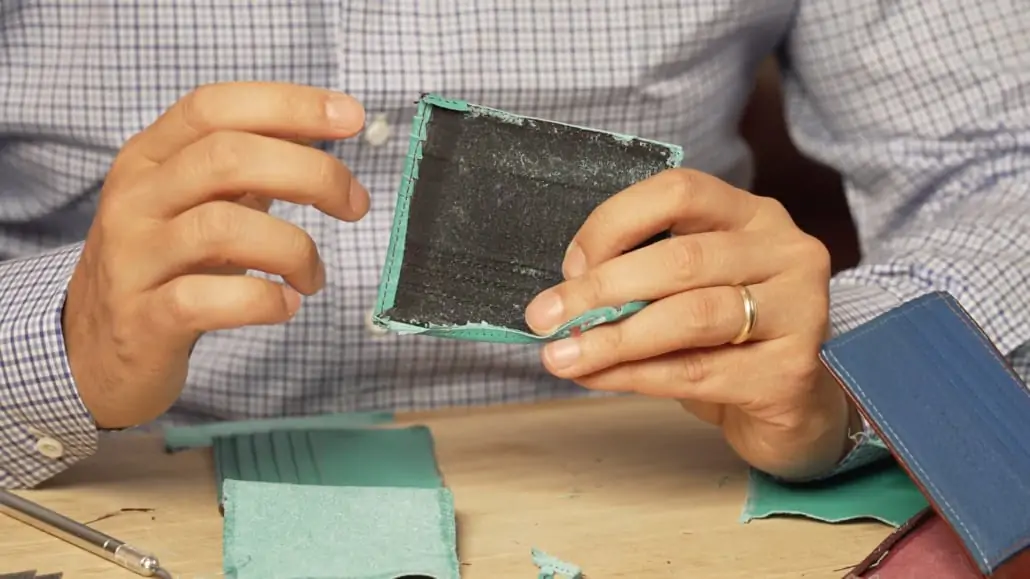
Then we tried to make the leather as thin as possible, but, at that point, it just wasn’t stable enough anymore. But, the cotton still has a nice flexibility. So, again, it’s great to work with people who have done something for hundreds of years, because you don’t have to just do all kinds of trial and error to get things the way you want them to be.
Cutting it off here on the backside, loosening the threads. It’s lined with cotton from both sides. Down here is the Fort Belvedere logo. And then, the card layers are lined with this cotton so it’s not too big. But, on top, you still have all leather so it looks like a nice all-leather wallet.
Then, again, the edges on top are folded, and an iron here was used to create an impression, which makes it look neatly finished. Then they’re all folded and glued. It’s aniline dyed all the way through. Finishing being slightly darker, but it’s typical because you have different finishes on top. So, these are the individual compartments.
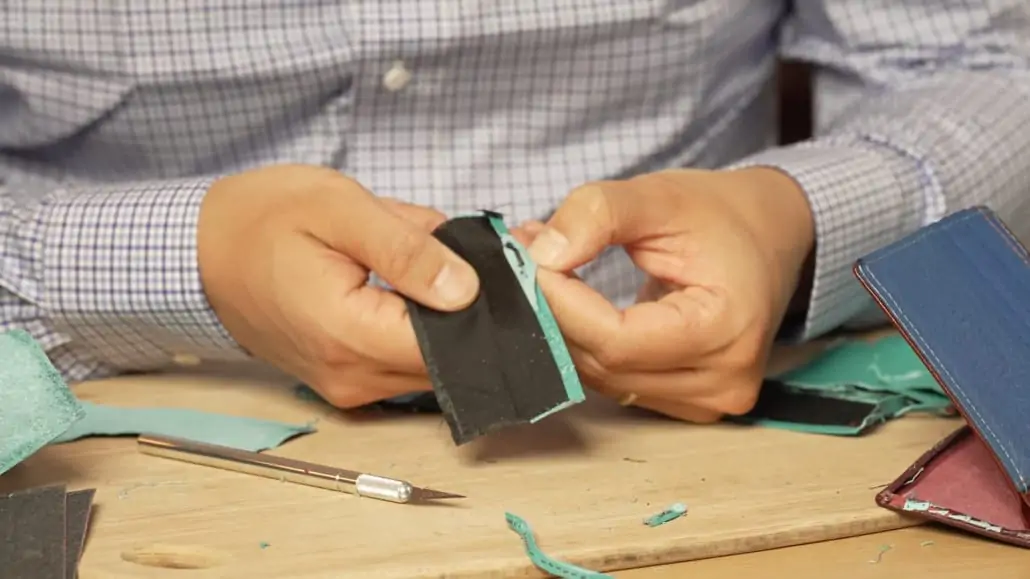
And they’re all the same basically, right? It’s always a piece of cotton with leather on top. Voila! You can see all these stitch rows here in the back, holding everything in place together. So, it doesn’t move around and the cards don’t go too far down. These are all actually cut individually by hand, which, for leather, is nice because leather is not identical.
It’s a natural product. It’s from a natural hide or skin, an animal. And so there are always irregularities and someone who’s into leather and able to cut it can see, “Oh, this is a little scratchy here. Oh, here I have to move a little bit, because this is not the highest quality part. But, the other part is and I want that.”
The Deerskin Wallet’s Final Layers
Sven Raphael Schneider: So, now, here, last but not least, this is the final layer here. It’s glued together. You can see this piece of leather is extremely thin, just so it doesn’t add a lot of bulk. Deerskin is just a nice durable leather that has this characteristic creasing. It is very different than calf leather.
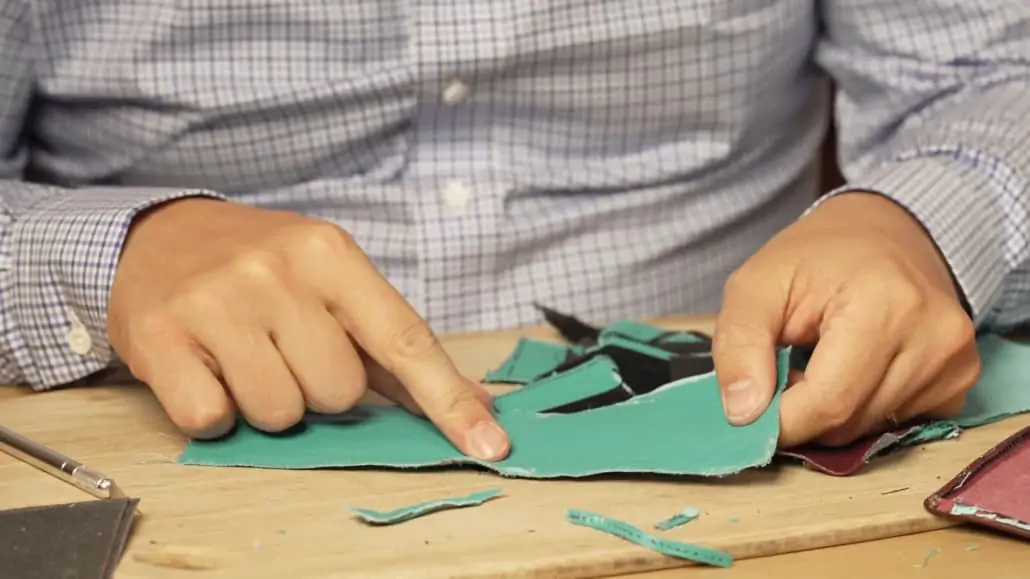
A Quick Look at a Calfskin Fort Belvedere Wallet
Meanwhile, the calf letter is a little stiffer and this one in particular, as you can see, has a nice effect when the light shines on it and that’s achieved by the top here. You see the leather has a light brown color. But, this is a lot darker brown.
So, whenever you want this effect, when you feel like you can look inside the leather, you want a lighter color underneath and something darker on top that in certain spots allows to just look deeper inside of it. If you were to have an aniline-dyed leather in brown, if it was the same color, pretty much the same at the bottom and at the top, would be much harder to get this desired effect.
So, here we have the outer shell, which is Italian calf leather. You can really see the lighter spots that you need for this kind of effect that you get on the leather. Otherwise, the lining is all deerskin leather. If you look at the edges here, where they’re folded, you can just unfold them.
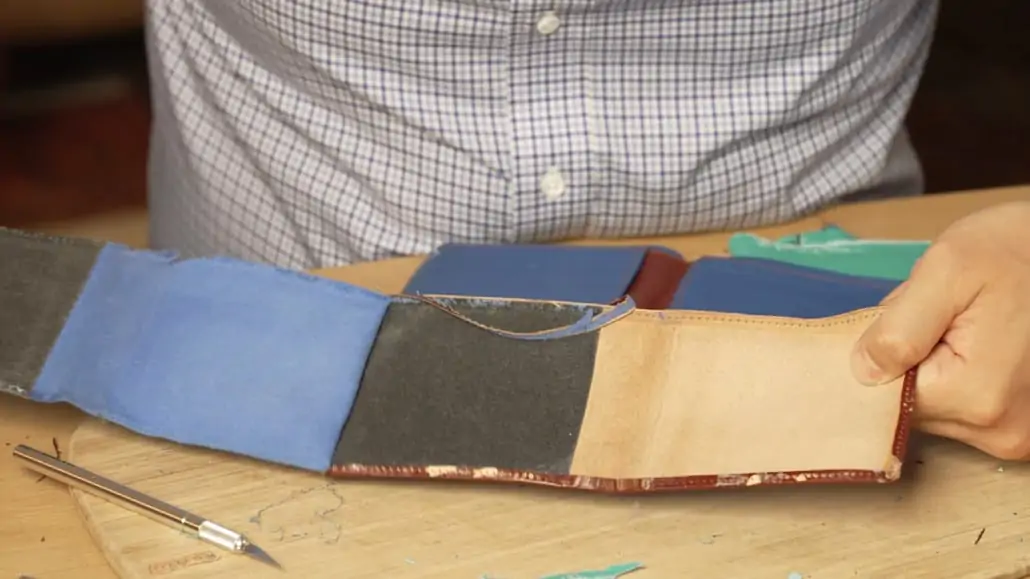
Here you can see the beautiful color of the interlining. You can see it’s just attached at the edges, not in the center because when you have two layers of leather, the outer layer here has a different distance than the inner layer. And if they were glued, there would be a certain tension. This way, they can still move in your wallet, in the back pocket of your pants, without wrinkling.
The backing is all leather. For the individual compartments of the credit card slots, you need a special machine that you can get leather that is thin and uniform. It rips much more easily when you tear it from a raw edge. But, since the edges are folded, you cannot make that initial tear, and it’s much more durable.
Where are Fort Belvedere Wallets Made?
Our wallets are made in Germany. Definitely not a low-cost country. But, when we make these products, we look for people who really know what they’re doing–for a tradition of craftsmanship and someone who is similarly obsessed with quality, as we are.
If that means that the product costs a little more, so be it. We’d rather do it right at a higher price than making a cheaper product that is not up to snuff.
All the individual compartments look so simple from the front. But, actually making them and folding all the edges, it’s quite a bit of work. The leather is thinner there because we don’t want to add any thickness and it’s backed by several layers. So, it doesn’t have to be as thick.
Where the wallet creases, it develops a patina. You can really see how the lighter color shines through the leather. And because it’s a non-sanded leather, it’s just a very nice look. It’s finished with wax so it gets its shininess. But, yeah, just a very cool calf leather, and I like the look.
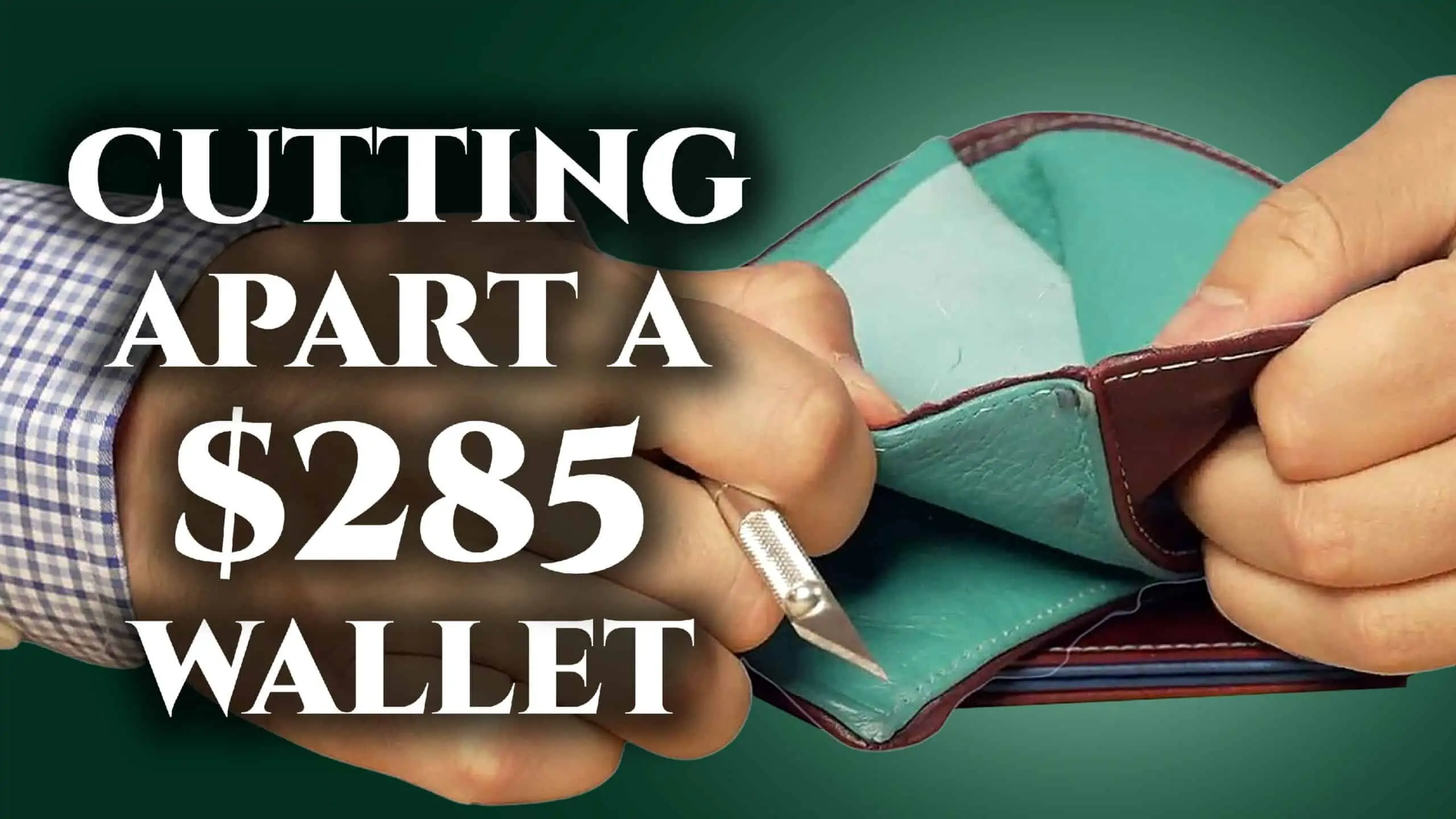
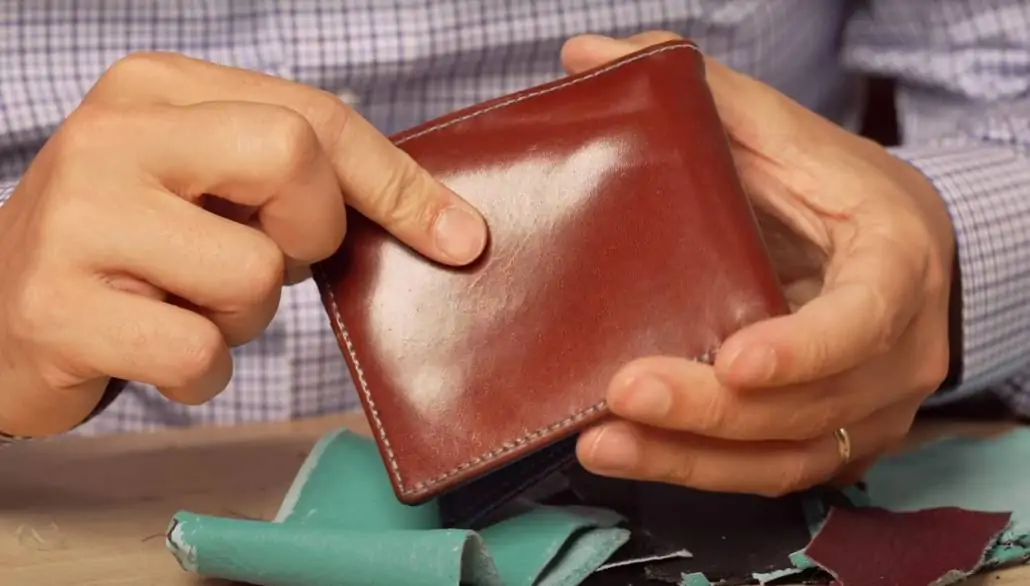
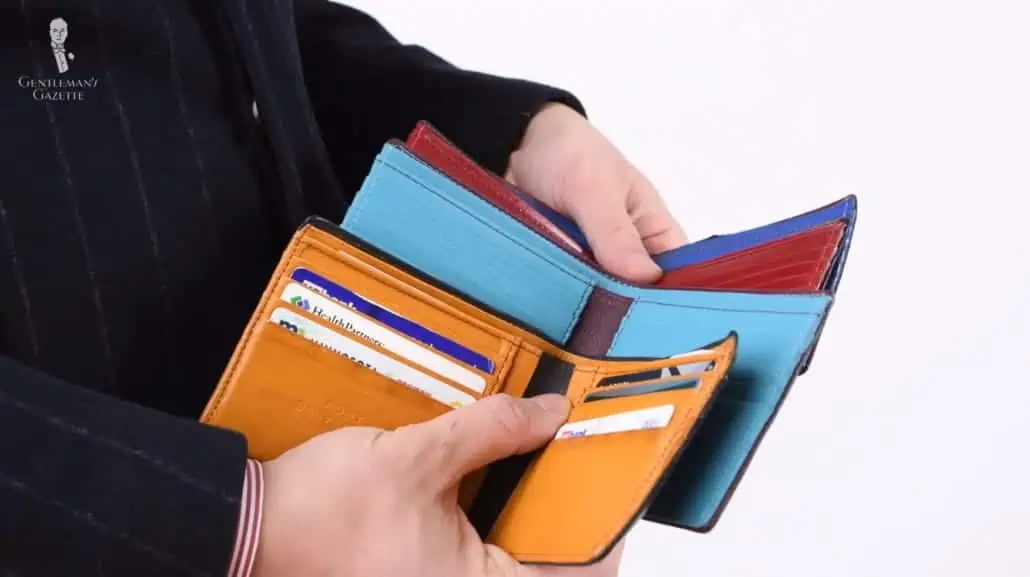
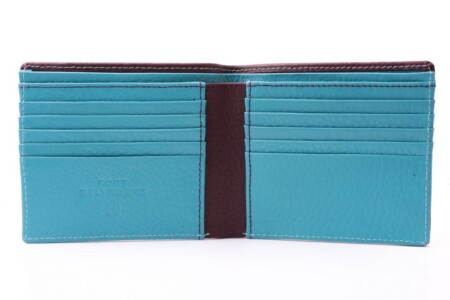
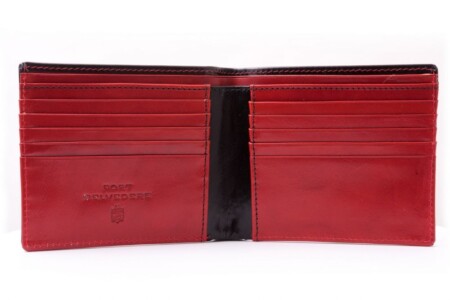
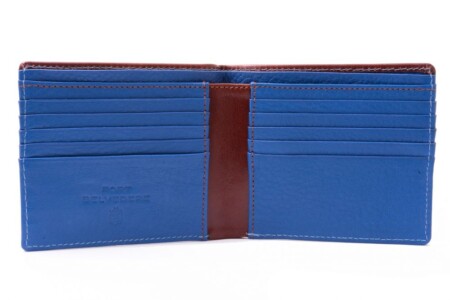
I saw your video on the quality of FT BELVEDERE Wallets which was very impressive. Iam inquiring if you have a 6 slot wallet for holding American currency of $1, $5, $10 on one side and $20, $50, $100 on the other side. A inside slot for 2 credit cards would be a plus. I still use cash and do use credit cards as well. I did have a Breast Pocket style with those features in black but unfortunatley, I lost it. Please advise. I enjoy all your videos. Thank you.
Completely off the subject, but can you fellows do anything about Pat Sajaks’s wardrobe and dressing mistakes?
If I spend $285 on a wallet I would have nothing left to put in it.
Spending $285 on a wallet that most other people will rarely see? Not for me? I bought a Alpine leather one for under $100 and had money left over to put in it and that was several years ago and it still looks great !! But, if you need a 285 wallet to boost your ego hey, who am i to say no, go for it !